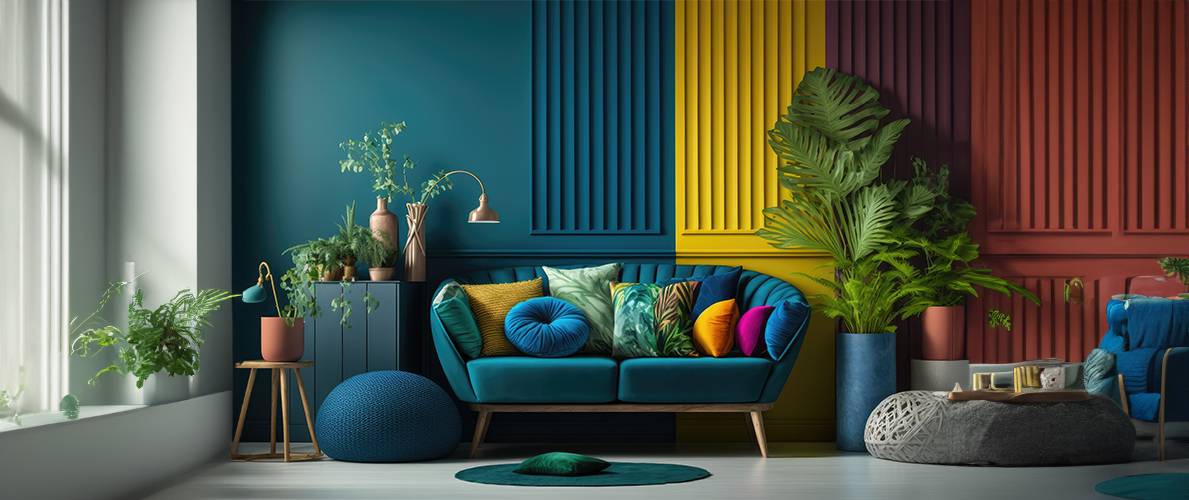Work with expert interior design firms for a customized aesthetic.
Work with expert interior design firms for a customized aesthetic.
Blog Article
Transform Your Home With Essential Principles of Interior Layout and Aesthetic Appeals
By understanding the influence of shade theory and the value of texture and patterns, one can produce rooms that are not only aesthetically appealing yet additionally deeply individual. Achieving this stability entails more than plain decor; it includes a calculated setup and a keen understanding of just how each aspect communicates within a room.
Comprehending Shade Theory
Recognizing the principles of color concept allows developers to produce areas that reverberate mentally with residents while fulfilling practical demands. Each classification plays an essential function in developing consistency within a room.
The psychological effect of shades is profound; warm tones such as reds and oranges evoke power and warmth, while trendy tones like blues and environment-friendlies advertise calmness and serenity. Moreover, using corresponding colors boosts visual rate of interest, producing striking contrasts that can elevate a space's allure.
Neutral shades, on the other hand, act as a flexible background, permitting various other design elements to beam. It is necessary to think about factors such as illumination and the space's purpose when choosing a color scheme, as these can change the perception of shades throughout the day.
Inevitably, a well-considered color design can change a space, fostering a feeling of comfort and design that straightens with the residents' preferences. Mastery of shade theory is, consequently, a vital ability for any type of interior developer aiming to create harmonious and welcoming settings.
Accomplishing Equilibrium in Layout
Exactly how can designers achieve a sense of balance in their rooms? Achieving balance in design is basic to creating unified interiors. Developers can use 3 primary kinds of balance: in proportion, unbalanced, and radial. Balanced balance involves preparing components uniformly around a central factor, promoting a sense of order and harmony. This kind frequently includes pairs of furnishings or artwork, boosting visual stability.
Unbalanced balance, on the various other hand, relies on varying elements that still attain a natural appearance. This technique permits for even more dynamic and informal arrangements, offering rate of interest while maintaining stability. By very carefully picking varying dimensions, shades, and structures, designers can develop a visually engaging room that feels well balanced yet energised.
Radial balance highlights a main centerpiece with components radiating external. This design is typically seen in round formats, where furniture and decor develop a natural surround that draws the eye internal.
Inevitably, achieving balance needs thoughtful factor to consider of range, proportion, and the connections between aspects. miami interior design. By masterfully using these balance principles, designers can change areas into atmospheres that really feel both aesthetically pleasing and functionally harmonious, improving the general experience for owners
Importance of Spatial Awareness

A keen sense of spatial recognition allows designers to identify focal factors within a space, leading the audience's interest to vital functions while preserving a total feeling of unity. It likewise helps in the strategic placement of illumination, which can significantly affect the understanding of area and state of mind. Moreover, recognizing spatial relationships makes it possible for the developer to satisfy the details demands of citizens, ensuring that each location offers its designated function without jeopardizing visual appeals.
Ultimately, spatial understanding is essential for taking full advantage of the potential of any kind of indoor area. By thoroughly considering the interaction between measurements, design, and function, designers can produce atmospheres that not only fulfill functional requirements yet also evoke a sense of convenience and beauty, boosting the general living experience.
Including Appearance and Patterns
Embracing a varied series of textures and patterns can dramatically enhance the aesthetic and responsive charm of an interior area. The strategic use numerous materials-- such as timber, metal, textile, and stone-- develops depth and passion, making a room really feel more welcoming More hints and vibrant. For example, incorporating smooth surfaces with rough appearances can establish an equilibrium that attracts the eye and engages the detects.
When incorporating patterns, think about both range and rep. Big patterns can function as prime focus, while smaller sized, refined layouts can match other aspects without frustrating the room. Layering patterns, such as pairing floral pillows with striped throws, includes intricacy and a feeling of harmony if carried out attentively.
It is likewise vital to keep a natural shade combination, making certain that appearances and patterns collaborate as opposed to compete for focus. By picking a couple of vital appearances and patterns, you can produce a combined visual that mirrors your personal style while enhancing the total atmosphere this of the space. Ultimately, the cautious consolidation of these aspects can transform a mundane space right into an advanced environment abundant with character and warmth.
Individualizing Your Room
Creating a space that mirrors your character is important to achieving a truly welcoming environment. Customization in indoor style allows you to instill your distinct design and rate of interests into your home, transforming it from a plain shelter into a shelter that speaks to that you are. Begin by selecting a shade combination that resonates with your feelings-- bold tones can stimulate, while soft tones offer harmony.
Incorporate art work and design that mirror your enthusiasms, whether it be traveling, nature, or abstract ideas. Presenting personal collections, such as publications, photographs, or keepsakes, can evoke valued memories and create centerpieces within a room. Furthermore, take into consideration tailoring functional items, like upholstered furniture, to line up with your aesthetic choices.

Final Thought
Finally, the improvement of a home via the important principles of interior decoration and looks demands an extensive understanding of color concept, balance, spatial understanding, appearance, and customization. Each element contributes substantially to developing an unified and functional living atmosphere - luxury interior design. By thoughtfully integrating these principles, individuals can improve the visual appeal and emotional resonance of their areas, eventually promoting a home that shows special identifications while offering convenience and usefulness
Report this page